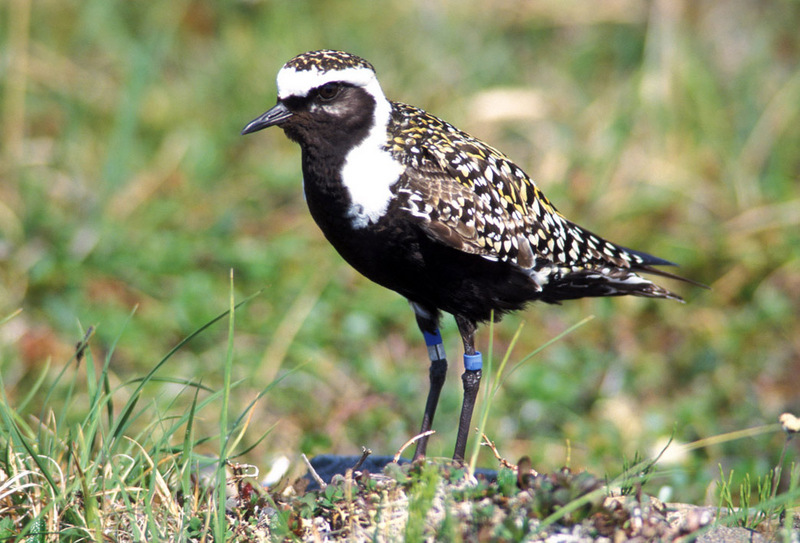American Golden Plover (Pluvialis dominica) - Wiki American Golden Plover
From Wikipedia, the free encyclopedia
[Photo] American Golden Plover (Pluvialis dominica), male, date 1998. Creator: OW Johnson. Source: Fish and Wildlife Service (public domain)
The American Golden Plover (Pluvialis dominica) is a medium-sized plover.
Adults are spotted gold and black on the crown, back and wings. Their face and neck are black with a white border; they have a black breast and a dark rump. The legs are black.
It is similar to two other golden plovers, Eurasian and Pacific. The American Golden Plover is smaller, slimmer and relatively longer-legged than Eurasian Golden Plover (Pluvialis apricaria) which also has white axillary (armpit) feathers. It is more similar to Pacific Golden Plover (Pluvialis fulva) with which it was once considered conspecific under the name "Lesser Golden Plover". The Pacific Golden Plover is slimmer than the American species, has a shorter primary projection, and longer legs, and is usually yellower on the back.
These birds forage for food on tundra, fields, beaches and tidal flats, usually by sight. They eat insects and crustaceans, also berries.
The breeding habitat of American Golden Plover is Arctic tundra from northern Canada and Alaska. They nest on the ground in a dry open area. They are migratory and winter in northern South America. They follow an elliptical migration path; northbound birds pass through Central America about January-April and stage in great numbers in places like Illinois before their final push north. In fall, they take a more easterly route, flying mostly over the western Atlantic and Caribbean Sea to the wintering grounds in Patagonia. The bird has one of the longest known migratory routes of over 2500 miles, much of which it flies without stopping to eat or drink. It does this from body fat stores that it stocks up on prior to the flight. It is a regular vagrant to western Europe.
A comparison of dates and migratory patterns leads to the conclusion that Eskimo Curlews and American Golden Plovers were the most likely shore birds to have attracted the attention of Christopher Columbus to nearby America in early October 1492, after 65 days at sea out of sight of land.
Large numbers were shot in the late 1800s and the population has never fully recovered.
http://en.wikipedia.org/wiki/American_Golden_Plover
| The text in this page is based on the copyrighted Wikipedia article shown in above URL. It is used under the GNU Free Documentation License. You may redistribute it, verbatim or modified, providing that you comply with the terms of the GFDL. |
